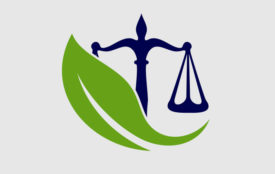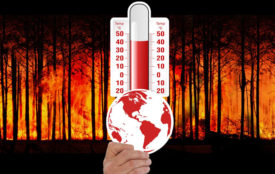Water in trouble 3/4
Even in today’s water-rich Central Europe we are heading for a water shortage. Our water is being used, contaminated and wasted.
Poison in water, chemical waste, fertilizers and air pollution threaten our most important means of survival.
- German industry consumes 16 billion cubic meters of water per year. Every day paper mills and chemical factories dump – into the Rhine and into drinking water – 230 tons of toxic carbon compounds, among them benzene, xylene and Toulol. Chlorine is bleaching agent for paper. The sewage of paper mills contaminates rivers and seas.
- Agriculture contaminates ground and surface water with liquid manure, fertilizers, herbicides and insecticides. Nitrates and ammonia are carried by the wind into the forests and to the sea. The Baltic Sea alone has to bear over a million tons of nitrogen and almost 80,000 tons of phosphate from its littoral states.
- Each of us today consumes 8 times as much water as his grandparents did 80 years ago.
- Water will soon become the scarcest of all natural resources worldwide. We could live to see wars over water – they are a threat to the Middle East and Africa, but also to the Indian subcontinent and to post-communist China. Oil can be replaced by sun, wind and biomass-derived energy. Water, however, remains irreplaceable – we cannot increase it.
120 years ago water had to be filtered once. Today we rely more and more on large technology and chemistry in order to clean polluted water. In Germany water has currently to be treated in up to eight stages to make it drinkable again. It is being chlorinated, filtered and irradiated.
Thea Colborn, zoologist and toxicologist from Washington makes clear that chemicals in water cause fertility defects not only in fish and birds, but also in humans: “We just discover that, unfortunately, some of these pollutants can penetrate the uterus. So they are present when the baby grows in the womb.” Obviously these are not isolated cases, but a global problem. “Many chemicals that we have used in the past will be out there in nature for a long, very long time. They accumulate in the tissues of animals and humans, in every individual, from the North Pole to the South Pole, from east to west.
And further toxic substances are continually added to this basic contamination”, scientist Colborn analyzes. The sperm count in men worldwide has roughly halved. Many animals in lakes, rivers and seas even today don’t have any offspring any more. Perhaps we will soon have to update the biblical message “grow and multiply” by adding “as long as you can”.
The dramatically declining fertility of humans and animals is a consequence of global environmental destruction that is still largely unnoticed and little explored – a ticking time bomb.
Since 1900 world population has grown from 1.6 to over seven billion – water resources, however, have remained the same. Today each and every one of us in Germany consumes 122 liters of water a day. Water, which is so pure that you can drink it. But for cooking and drinking we only use four liters a day. We daily flush 40 liters of drinking water per capita down the toilet, 52 liters are used for bathing and showering and for washing and dishwashing another 25 liters of drinking water. Americans on average even consume as much as 400 liters of water per day, most of it also for toilet flushing and car washing.
In the past decades we’ve done something to water that has been unthinkable for millions of years. We have destroyed nature so much that clean water has become increasingly scarce. Lakes, rivers and streams, even rainwater are so contaminated that only highly complex, multiple chemical-technical processes can make water drinkable again.
Wars over water?
In many countries of the world politicians are trying to solve the water crisis by transferring water supply to corporations. But now many examples show that globally active water companies are interested in their own profits rather than their customers’ health.
The UN has declared water a human right: Therefore politics are primarily in charge of water supply.
The river Jordan today flows into the Dead Sea with only a third of its previous rate. In Syria, Jordan, Iraq and all over northern Africa large areas are threatened by drought. Especially along the rivers conflicts will increase.
Reasons
- 40 per cent of the world’s population live on the banks of transboundary rivers;
- 120 of the 200 major rivers draw large parts of their water from more than one state;
- The greenhouse effect and water shortage lead to salinization of the soil.
- The World Bank is concerned that there will soon be wars over water and cites three examples of a “crisis scenario that threatens all of Asia”:
- In 2025 Bangkok, Thailand’s capital, will not be able any more to provide drinking water for its inhabitants;
- In Indonesia’s capital Djakarta even today the municipal water supply is contaminated with faecal bacteria and ammonia.
- In five years, all the ground water resources in the Philippine capital of Manila will be contaminated. Are we a hopeless case?
Part 1: Water is becoming more precious than gold 1/4
Part 2: So water is more than H2O 2/4
Part 3: Water in trouble 3/4
Part 4: Ways of a new water policy 4/4
Source
Franz Alt 2013 | Translation: Peter Reif 2013








